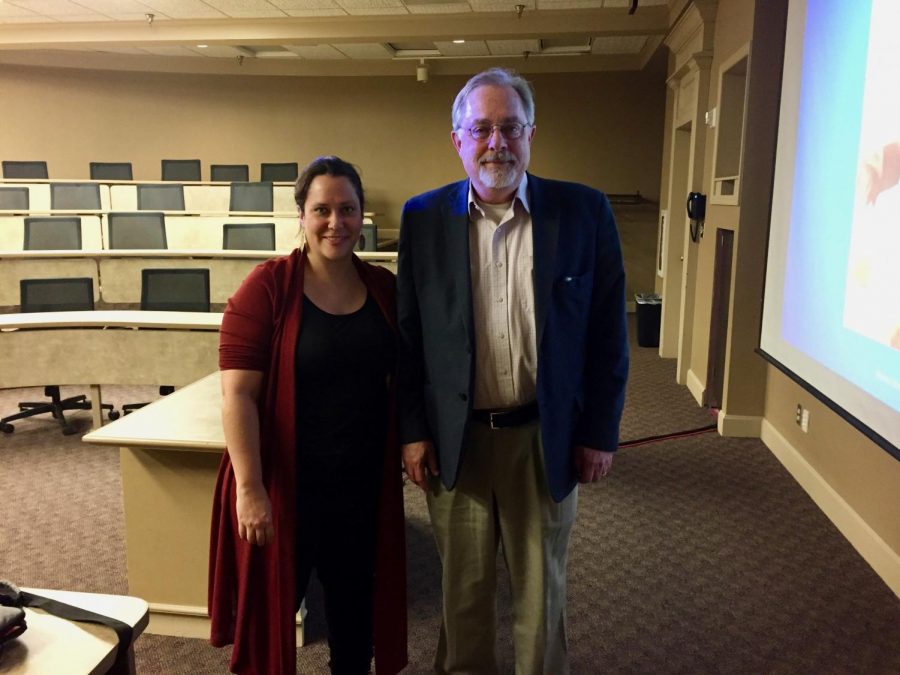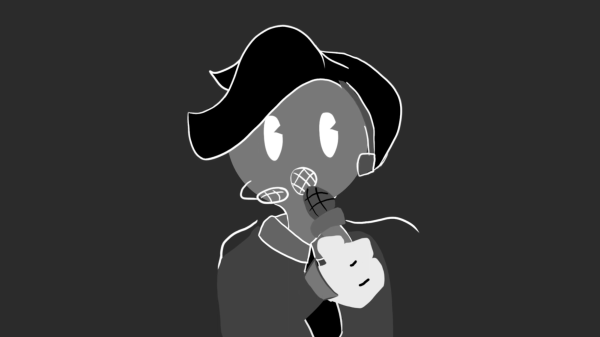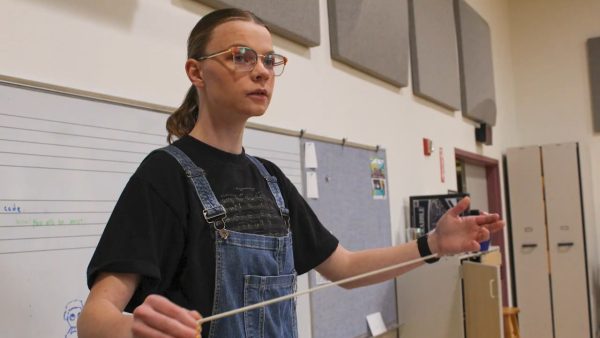William Patterson University Psychology Professor encourages BVU students to achieve their goals with video game design
November 28, 2017
Thursday, November 16, Thomas Heinzen, Professor of Psychology at William Paterson University in New Jersey, arrived to Buena Vista University (BVU) and spoke to students about the various ways video game design relates to real life.
Heinzen is well known for his use of video game design strategy in general motivation. He incorporates this application of video game design strategy as a comparison to life, elaborating on how this works during the ACES program. He uses the analogies of reaching the next level by learning from personal mistakes to improve each time. He encouraged college students to set goals for themselves, and work to reach them.
“One of the things that is unique about games is that they allow you to fail frequently,” said Heinzen in his opening statement.
The way a game provides challenges to overcome by experiencing failure relates well to real life because of the possibility of failure, but we have to try again to achieve our desired result, according to Heinzen.
There are five principles incorporated within game design. Experience, on-boarding, leveling up or flow, failing forward, and story. Each of these are what make a game worth playing, says Heinzen. If a game is portrayed as unfairly organized, then people will not want to play it. He says this is the same in life. If you are looking at involvement in something and it seems unfair, it is unlikely that you will take part in it.
Heinzen continued his presentation with a game.
He began by splitting $100 between two people. One person makes an offer about how to split this $100, and the other accepts or rejects the deal. However, if the latter person, or “decider” rejected the offer, neither of the two people would get any money. The purpose of this game is to reveal values and motives of the opponent.
Heinzen then asked what could be done to make the game better. Keeping score, alternating roles, playing a number of times, and playing with real money were all suggested improvements. The improvements can be extremely effective in game making.
“A well designed game pulls stuff out of you that you didn’t know you had,” emphasized Heinzen.
Social purpose game design is effective for solving social problems. Heinzen described real-life examples where game design could be used to improve the result of recycling, using the stairs, and others. He said painting stairs in a piano key pattern is a strategy used to motivate people to take the stairs rather than the escalator, or installing an explosion sound in a trash can so that when people recycle, they will hear the explosion when throwing the trash away and delivers motivation to recycle instead of throwing trash on the ground.
Levels are another effectively used strategy in games to encourage achieving an “epic win,” which is always the desired end result for the gamer. The win is what they work toward for the entire game, which motivates the gamer to be creative with their solutions. With no surprise to the audience, Heinzen used another game to prove his point. A few volunteers were called forward to tell a truth or a lie, and audience members voted for who was honest, and who wasn’t.
Heinzen pointed out that clues such as voice level changing from high to low, facial expression changes, and pauses while speaking told whether the person was telling a truth or lying. It is the same in a game, according to Heinzen. Game design forces people to use their resources to find information to reach the desired goal.
The presentation was continued with discussion comparing higher education to a game. Does higher education have points, badges, and leaderboards? These are three important factors in game design, and higher education in a similar way. Points can be compared to grades and GPA, badges to scholarly awards, and leaderboards to honor roll. Each of these can be considered hazardous, and sometimes counterproductive in the learning process.
Other attributes in game design that can be comparable to real life are power ups, which the audience compared to caffeine, leveling up compared to moving up a grade, and checkpoints compared to summer or breaks. These all are involved in real life circumstances in college and are strategies that are available to motivate the “player” to achieve the final goal.
Graduation is the final “epic win” that students in higher education are working toward. Heinzen defined failure as a way to discover the kind of success you can have, and understanding principles behind game design can help you reach this success.
Heinzen has previously worked with Professor of Experimental Psychology and Assistant Dean of Graduate Studies Dr. Wind Goodfriend co-authoring her first two psychology textbooks scheduled for release early in 2018.



















